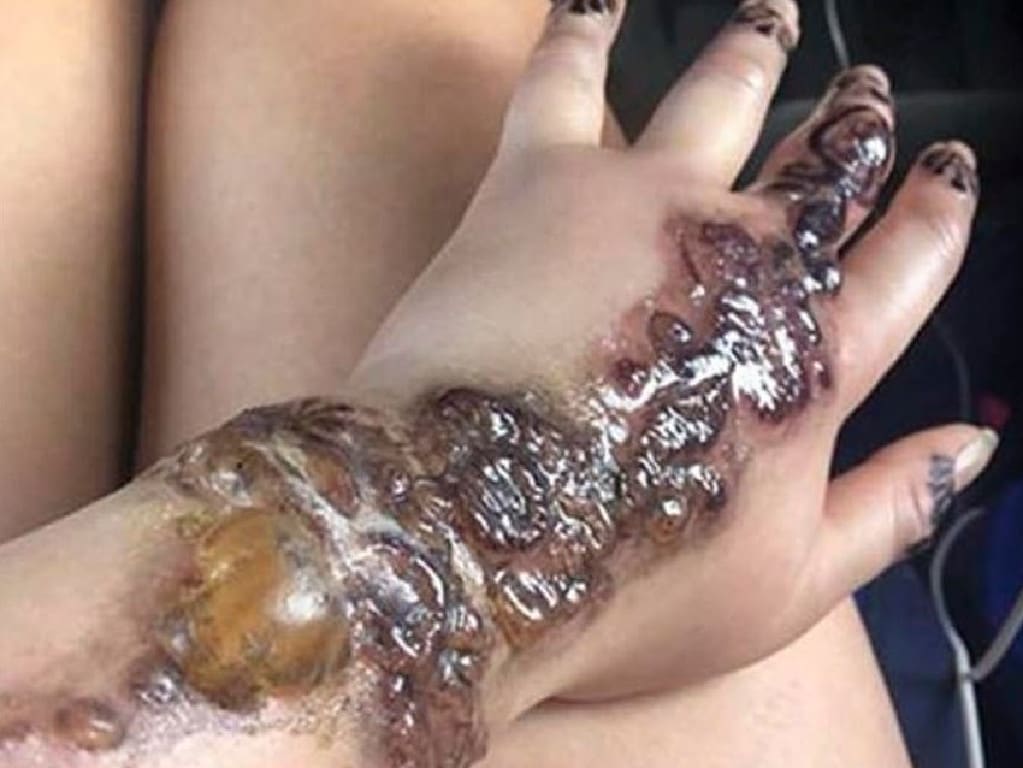


A Melbourne woman was lucky not to lose any fingers after a seemingly harmless temporary henna tattoo turned ugly.
The situation took a turn for the worse when Ms Crannaford began to lose sensation in her fingers, with the application site breaking out into severe blisters.
“At first, a few hours after it was applied I started to feel really itchy, and then progressively over 24 hours it got worse and worse,” Ms Crannaford told Yahoo News.
Luckily, she managed to get to a doctor, who diagnosed her with cellulitis – a bacterial skin infection which can be life threatening if left untreated.
“They diagnosed me with stage three cellulitis and a severe chemical/second or third degree burn,” she said.
“I was extremely lucky not to lose any digits.”
Ms Crannaford – who was 25 at the time – said it took three weeks before the wound was in a state where it could be left uncovered. It was another week before she could return to work.
It’s not the first time a henna tattoo from Egypt has turned dangerous.
A little girl was left with horrific scars in 2017 after suffering chemical burns from one of the temporary tattoos, despite having it done in-house salon at the ritzy hotel where they were saying.
Madison Gulliver complained the pretty swirls on her forearm were itchy once they arrived home in the UK. Not long after, they erupted in a series of blisters which had to be removed by medics at a specialist burns unit.
She was required to wear a pressure bandage for six months in an attempt to minimise the scarring.
Families have been warned to avoid henna tattoos while overseas.
“Unlike here in Australia, there may not be any regulation of what goes into the dye, and children in particular, can have extreme reactions that can cause blistering, open sores and a chemical burn,” Dr Ryan Harvey from House Call Doctor told Yahoo News.
“It looks like the patient has suffered an extreme allergic reaction to something in the dye and it’s caused a chemical burn to the skin.”
Black henna usually causes burns because it contains the ingredient paraphenylenediamine (PPD), which can damage the skin in incorrect doses.
Original Source: Herald Sun | 11 July 2019
Also published in: News.com.au, Adelaide Now, Cairns Post, Brisbane Courier-Mail, Daily Telegraph Australia, Northern Territory News, Townsville Bulletin, The Mercury, Weekly Times Now, Perth Now and Geelong Advertiser.




